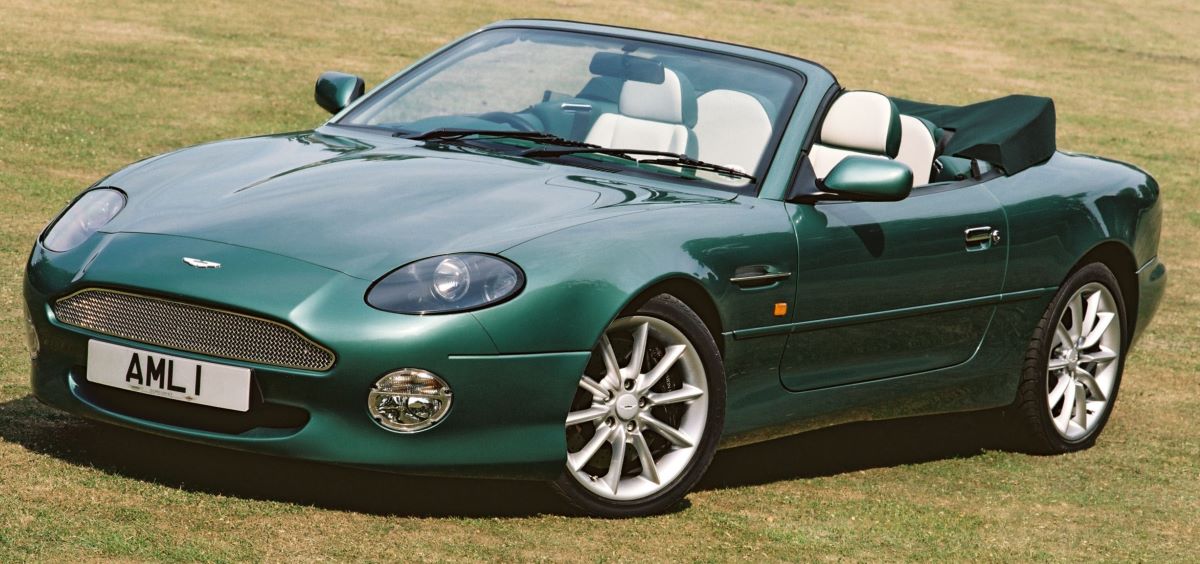
Aston Martin DB7
- Production dates: 1994 – 1999
It was Victor Gauntlett who first suggested that a new, smaller Aston Martin should be built alongside the big V8 Astons, a car that would, in terms, be a volume seller.
The advent of the Ford Motor Company and the appointment of the late Walter Hayes as Chief Executive of Aston Martin not only provided new funding, but a renewed vigour in the person of Rod Mansfield who, as Engineering Director in 1990, was charged with the development of the ‘smaller’ Aston Martin, code names DP1999.
The new design, code named NPX, was subjected to far more development and testing than the majority of models to date, with the use of some 30 prototypes which were exposed to extreme conditions and temperatures across the World.
At the Geneva Motorshow in March 1993, Aston Martin launched the DB7 to the public.
The engine proved to be a light alloy, twin camshaft, supercharged straight six of 3,228cc based on a design that had originated at Jaguar. The cylinder head used 4 valves per cylinder with Zytec electronic multi-point fuel injection while the air needed to combust the fuel was delivered by a water cooled Eaton, ‘roots’ type, supercharger which was driven by a toothed belt from the camshaft.
Although it didn’t appear for almost 3 years after the DB7’s unveiling, Aston Martin had every intention of creating a soft-top version. In 1996, the Volante made its debut at the Los Angeles and Detroit motor show.
In 1999, the DB7 received significant engineering enhancements with the introduction of the DB7 Vantage – the first Aston Martin to use a V12 engine.
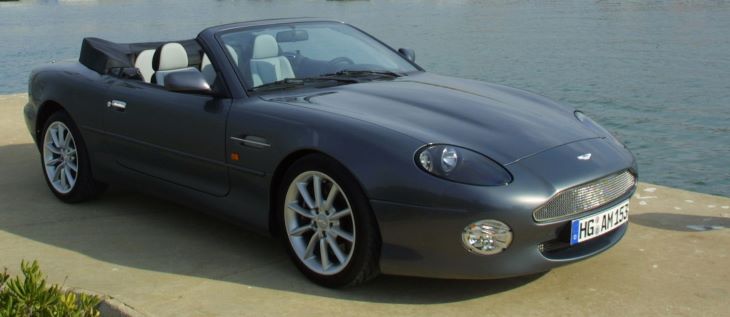
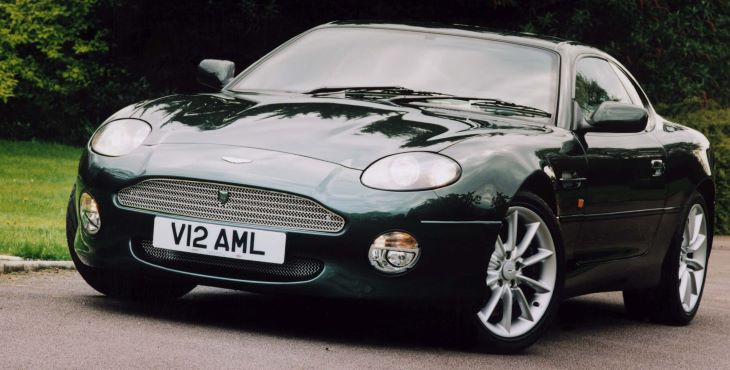

DB7 i6 COUPE
Convinced that Aston Martin needed to expand its appeal with a more accessible superlatively sophisticated but user-friendly sports car, new Chairman Walter Hayes presented his vision to the Ford Board in March 1991. The availability of the former JaguarSport factory at Bloxham, Oxfordshire as a production base and the Jaguar six-cylinder engine block as a foundation around which a unique twin cam supercharged Aston Martin power unit could be built, made the project viable.
With Sir David Brown’s blessing to use the magic ‘DB’ initials, Hayes inspired designer Ian Callum to create a thoroughly modern car that represented what the DB6 would have looked like if David Brown had been doing it now.
‘Project NPX’ – the new DB7 – was unveiled at the 1993 Geneva Motor Show to universal acclaim, and went into production at Bloxham in June 1994. Not only had the 3.4-litre DB7 undergone a rigorous test programme taking full advantage of new owner Ford’s international proving grounds, but triple Formula One Champion Jackie Stewart had been called in to fine tune the new Aston Martin’s handling characteristics.


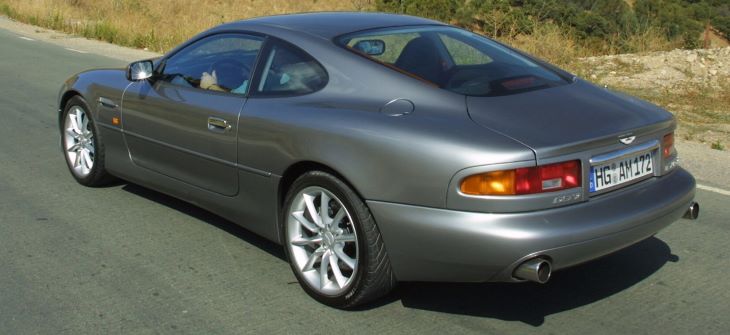
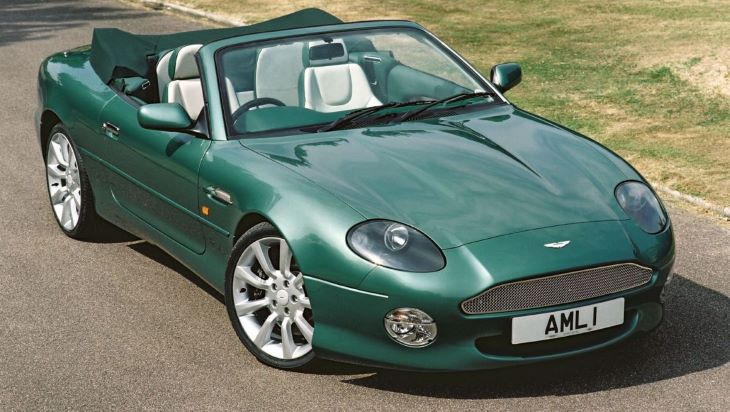
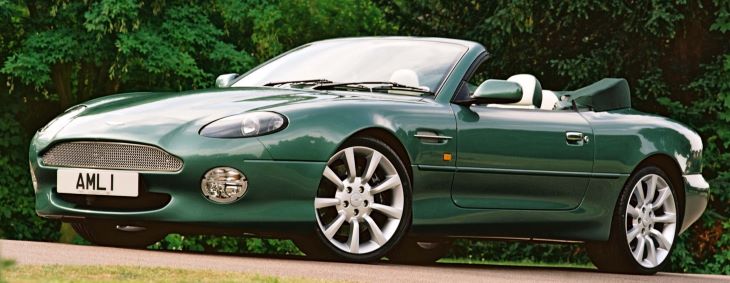
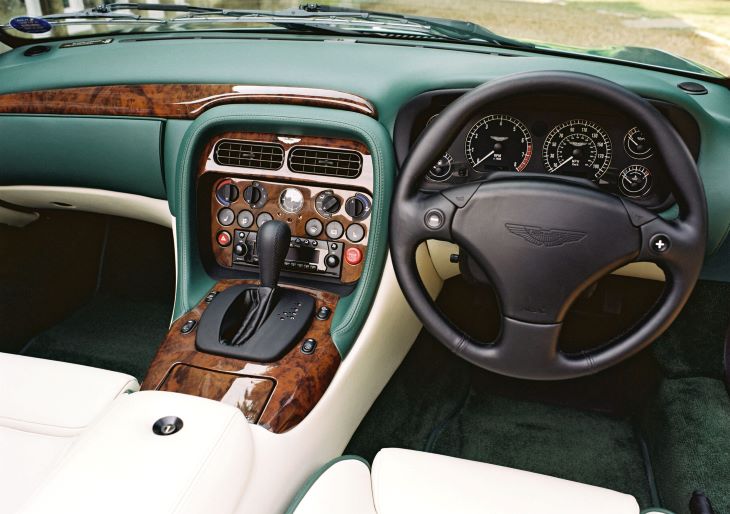

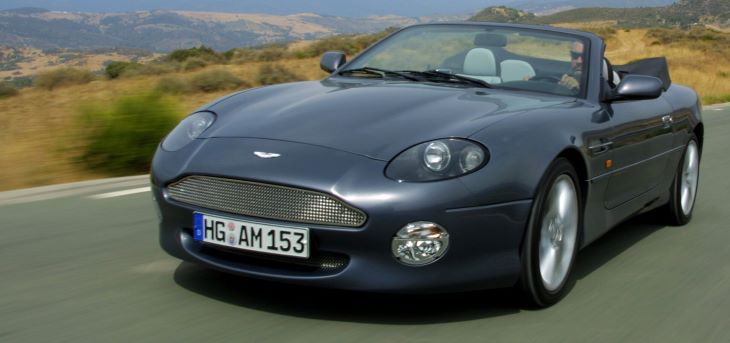
DB7 Fact File:
- DB7 has been sold into 29 different markets across the world since its launch.
- Since 1999, the DB7 Vantage has accounted for 60% of total DB7 sales.
- The Coupe constitutes for 56% of total DB7 production.
- DB7’s have been painted in more than 200 different colours.
- The most popular exterior colour for DB7 is green, followed by silver and then blue.
- Since 1993, more than 56,000 litres of paint have been mixed
- It takes over 200 man hours to build a DB7.
Specification
- Bore/stroke: 91mm x 83mm
- Length: 4631mm.
- Width: 1820 mm.
- Height: 1268 mm.
- Wheelbase: 2691 mm.
- Kerb Weight: 1725 kgs
- Track: (Front) 1524 mm. (Rear) 1530 mm.
- Fuel tank capacity: 89 litres (95 RON unleaded).
- Maximum power: 355 bhp @ 5500 rpm.
- Maximum torque: 500 Nm (368 lb. ft) @ 3000 rpm.
- Acceleration: 0 – 62 mph: 5.8 seconds (Manual Transmission).
- Maximum speed: 266 km/h (165 mph)

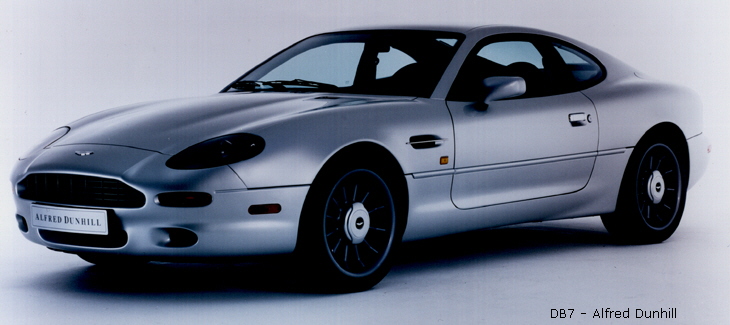
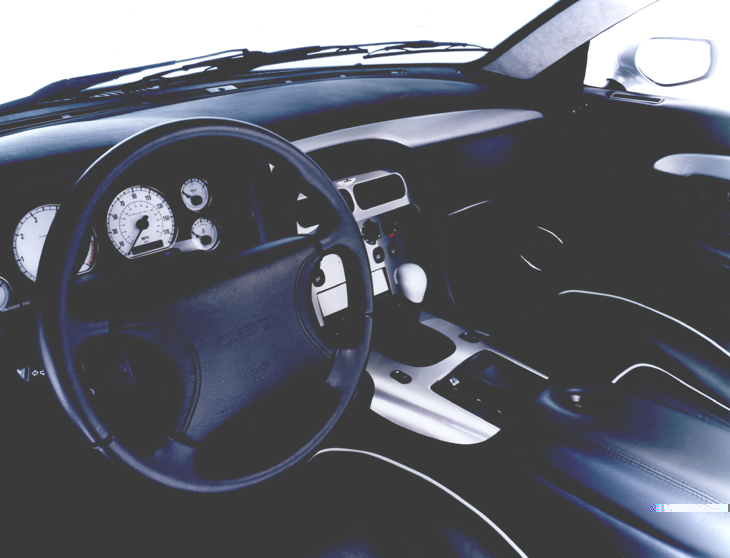
By the early 1990s it was obvious Aston Martin would need to increase production in order to survive. Victor Gauntlett suggested that a new, smaller Aston Martin should be built alongside the big V8 Astons, a car that could be sold in all markets and that would be less expensive. The advent of the Ford Motor Company and the appointment of the late Walter Hayes as Chief Executive of Aston Martin not only provided new funding, but brought with it access to some of the best vehicle engineering facilities in the world.
The new design, code named NPX, was styled by Ian Callum and engineered in conjunction with Tom Walkinshaws TWR group. Aston Martin revealed the DB7 at the Geneva Motorshow in 1993, with production starting in 1994 at a new factory in Bloxham, near Banbury in Oxfordshire.
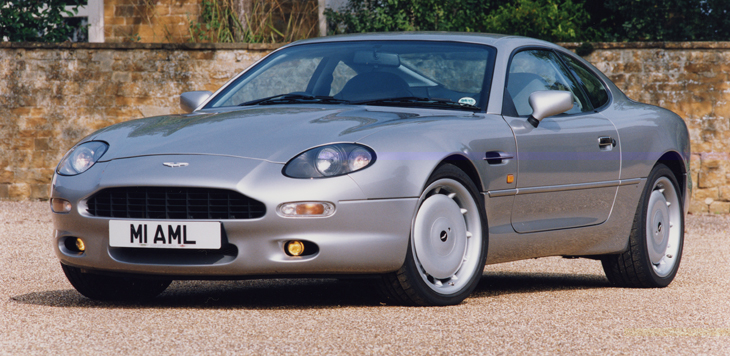
The new TWR built engine was a light alloy, twin overhead camshaft, supercharged straight six of 3,228cc. Featuring 32 valves, Zytec electronic multi-point fuel injection and a water cooled Eaton, ‘Rootes’ type, supercharger which was driven by a toothed belt from the camshaft. Although it didn’t appear for almost 3 years after DB7’s unveiling, Aston Martin had every intention of creating a convertible version. In 1996, the Volante made its debut at the Los Angeles and Detroit motor show and the two models sold alongside each other until being replaced by DB7 Vantage in 1999.

DB7 Zagato
The DB7 Zagato was introduced at the Pebble Beach Concours d’Elegance in August 2002 and later shown at the Paris Motor Show the following October.
The DB7 Zagato rekindled the relationship between Aston Martin and Italian coachbuilder Zagato, which had started with the iconic DB4 GT Zagato in 1961. This very special coupe was built as a strictly limited production run of only 99 cars and was only available in the UK, Europe and South East Asia (a 100th car was produced for the Aston Martin museum).
The unique steel bodyshell featured a distinctive, large front grille aperture, and the signature Zagato ‘double bubble’ roof line with sculptured rear window. The rear end was completely unique and had single round tail lights and a drop down boot lid. Zagato styled 5 spoke alloy wheels and a unique Analine leather interior completed the striking looks of this very special car. DB7 Zagato used a 440bhp version of the DB7 GT engine coupled to a 6 speed manual transmission.
The DB7 Zagato is powered by a 6.0 L V12 engine that has been tuned to now produce 441 PS (324 kW; 435 hp) at 6,000 rpm and 410 lb⋅ft (556 N⋅m) of torque at 5,000 rpm. Power goes to the rear wheels via a 6-speed manual transmission or an optional 5-speed automatic.[12] It featured upgraded suspension and brakes as well It has a top speed of 186 mph (299 km/h) and a 0–60 mph acceleration time of 4.9 seconds.
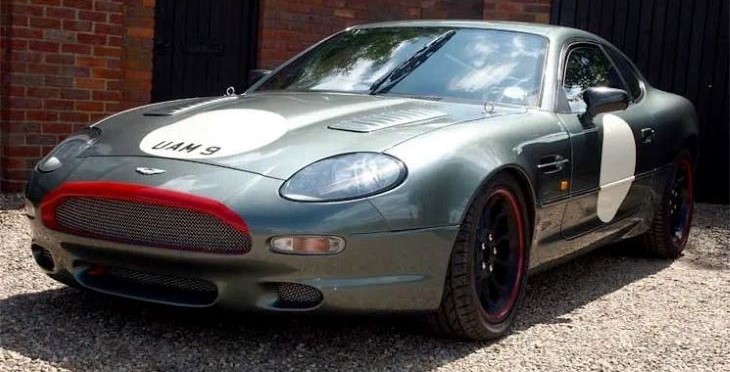
DB7 GT RACE CAR
A joint project between Aston Martin and Prodrive, just two examples of DB7 ‘GT’ race car were produced to explore the possibility of a one make race series. One car was built by Prodrive (red nose band) and the second car (with a yellow nose) was built at Aston Martin. Despite having stripped interiors and equipment both cars were trimmed in quilted leather as they were intended to be a ‘gentleman’s racer’
| Model | Years | Displacement | Gearbox | Peak power | Peak torque | Top speed | Acceleration time 0–100 km/h (0-62 mph) |
|---|---|---|---|---|---|---|---|
| DB7 I6 | 1994–1999 | 3,228 cc (197.0 cu in) | 5-speed manual 4-speed automatic |
340 PS (250 kW; 335 hp) at 5,500 rpm | 361 lb⋅ft (489 N⋅m) at 3,000 rpm | 266 km/h (165 mph) (manual) 257 km/h (160 mph) (automatic) |
5.7 s (manual) 6.9 s (automatic) 6.4 s (automatic MY97) |
| DB7 I6 Volante | 1996–1999 | 3,228 cc (197.0 cu in) | 5-speed manual 4-speed automatic |
340 PS (250 kW; 335 hp) at 5,500 rpm | 361 lb⋅ft (489 N⋅m) at 3,000 rpm | 249 km/h (155 mph) | 6.0 s (manual) 6.6 s (automatic) |
| DB7 V12 Vantage | 1999–2003 | 5,935 cc (362.2 cu in) | 6-speed manual 5-speed automatic |
426 PS (313 kW; 420 hp) at 6,000 rpm | 400 lb⋅ft (542 N⋅m) at 5,000 rpm | 296 km/h (184 mph) (manual) 266 km/h (165 mph) (automatic; limited) |
5.0 s (manual) 5.1 s (automatic) |
| DB7 V12 Vantage Volante | 1999–2003 | 5,935 cc (362.2 cu in) | 6-speed manual 5-speed automatic |
426 PS (313 kW; 420 hp) at 6,000 rpm | 400 lb⋅ft (542 N⋅m) at 5,000 rpm | 266 km/h (165 mph) (limited) | 5.1 s (manual) 5.2 s (automatic) |
| DB7 V12 Vantage GT | 2002–2003 | 5,935 cc (362.2 cu in) | 6-speed manual | 435 PS (320 kW; 429 hp) at 6,000 rpm | 410 lb⋅ft (556 N⋅m) at 5,000 rpm | 296 km/h (184 mph) | 5.0 s |
| DB7 V12 Vantage GTA | 2002–2003 | 5,935 cc (362.2 cu in) | 5-speed automatic | 426 PS (313 kW; 420 hp) at 6,000 rpm | 400 lb⋅ft (542 N⋅m) at 5,000 rpm | 266 km/h (165 mph) (limited) | 5.1 s |
| DB7 Zagato DB7 AR1 |
2003 | 5,935 cc (362.2 cu in) | 6-speed manual | 441 PS (324 kW; 435 hp) at 6,000 rpm | 410 lb⋅ft (556 N⋅m) at 5,000 rpm | 299 km/h (186 mph) 298 km/h (185 mph) |
4.9 s |

You must be logged in to post a comment.